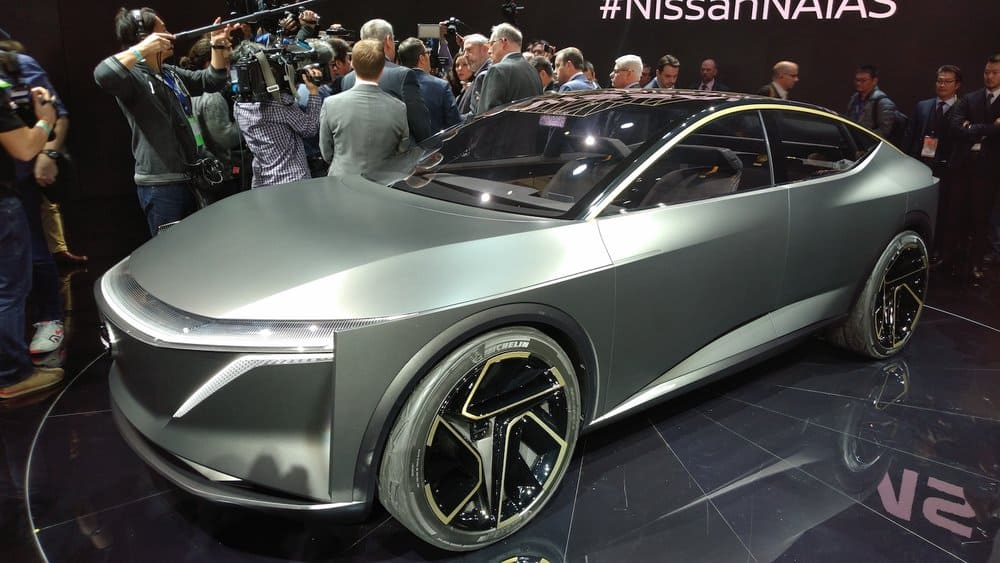FreightWaves features Market Voices – a forum for voices with unique knowledge of numerous transportation/logistics/supply chain sectors, as well as other critical expertise.
In “Tackling Climate Change with Machine Learning,” David Rolnick and his co-authors address how machine learning and artificial intelligence (AI) may be applied to the problem of climate change. They “identify high impact problems where existing gaps can be filled by machine learning, in collaboration with other fields.”
In this article, I focus on their recommendations for transportation. In the paper they categorize the solutions they discuss as High Leverage, Long-term and High Risk. I am focusing only on simplified descriptions of their High Leverage recommendations.

The authors are academic researchers who seek to apply their knowledge and experience in real-world, industrial settings. In prior articles, I have highlighted my belief that the big problems in supply chain and transportation call for collaboration across industries and domains of expertise. In fact, it is precisely that belief that led to the formation of The New York Supply Chain Meetup in August 2017, and The Worldwide Supply Chain Federation in May 2018. The paper by Rolnick and his co-authors reinforces that belief. The authors issue a call for collaboration, and the paper is written for researchers and engineers, entrepreneurs and investors, corporate leaders, and local and national governments.
Generalized dynamic assignment problems
In general terms, the problems that need to be solved when one seeks to apply machine learning, AI and other computational technologies to transportation and supply chain networks belong to a class of problems that I refer to as generalized dynamic assignment problems.
Here’s a statement of the problem: Numerous resources and numerous demands are distributed over a network such that any of the resources can be assigned to satisfy any of the demands, subject to a budget. Each resource incurs costs in the process of satisfying any given demand. Each resource can generate a profit or incur a loss in the process of satisfying any given demand. There is a resource-specific budget as well as a network-wide budget. Assign all the resources in the network to satisfy demands in a way that maximizes the network’s profit.
These are hard problems to solve. They become even more difficult when one accounts for real-world conditions and variables – the constantly changing uncertainties that are inherent in the real world is what makes these problems “dynamic.”
In the discussion below, I do not differentiate between freight transportation and passenger transportation. They are just different types of freight, and generally the problems are fundamentally the same.
Transportation
The authors identify the following strategies for reducing greenhouse gas (GHG) emissions from transportation – “decreasing transportation activity, increasing vehicle efficiency, reducing the carbon impact of fuel and shifting to lower-carbon options, like rail.”
Decreasing transportation activity is an issue that most readers of FreightWaves are already familiar with because it is basically focused on significantly reducing the occurrence of deadheading or empty legging. This can be accomplished by improving the collection and analysis of transportation data to aid demand modeling and freight bundling, consolidation and routing.
Vehicle efficiency can benefit from applications of machine learning to:
- The design of more efficient aerodynamics in all forms of transportation
- The design of more advanced combustion engines
- The development and deployment of more advanced power management methods in hybrid engines
- Applications of computer vision to more aerodynamic loading of freight
- The production of lighter parts for vehicles through additive manufacturing

Electric vehicles present an opportunity to greatly reduce the transportation industry’s GHG emissions if the electricity used to power vehicles is itself generated using methods that are low in carbon emissions. Machine learning can be applied to:
- Charge scheduling and optimization
- Congestion management
- Vehicle-to-grid algorithms
- Battery energy management
- Research and development of new types of batteries
Machine learning techniques can be implemented in understanding usage patterns as electric vehicles become more common and more people adopt them. Grid operators will need to understand load patterns resulting from aggregate usage between residential and commercial use of electric vehicles and accompanying technologies.
Improving low-carbon options is likely to become more of a priority in the future than it has been in the past. This is particularly the case in urban settings where tighter integration between low-carbon modes of mobility can be better integrated with public transit options. Machine learning is particularly suited for predicting demand for bikes in bike-sharing programs and coordinating such demand with mass transit schedules in a way that maximizes throughput. Machine learning can also be applied to coordinating intermodal freight schedules to maximize the amount of time freight spends on low-carbon emitting modes of transportation.
According to the World Health Organization, “The transport sector is the fastest growing contributor to climate emissions. Growth in energy use is higher for the transport sector than any other end-use sector. The main drivers of global transport energy growth are land transport, mostly light-duty vehicles, such as cars, as well as freight transport.”[1] The transportation sector’s contribution to climate change is in the form of long-lived carbon dioxide emissions and short-lived black carbon. Moreover, transportation also releases other forms of gaseous and particulate pollutants into the air.
In “The New Climate Economy,” a report published by the Global Commission on The Economy and Climate, the authors state that: “While recognizing the shortcomings of current economic models, analysis produced for this Report found that bold action could yield a direct economic gain of US$26 trillion through to 2030 compared with business-as-usual. And this is likely to be a conservative estimate.”
It is this opportunity that makes me excited
about startups building new innovations to refashion global transportation and
supply chain networks. Next week I will write about how machine learning and AI
can be applied to improve supply chains.
[1] https://www.who.int/sustainable-development/transport/health-risks/climate-impacts/en/ Accessed on Mon, Jul 22, 2019.










